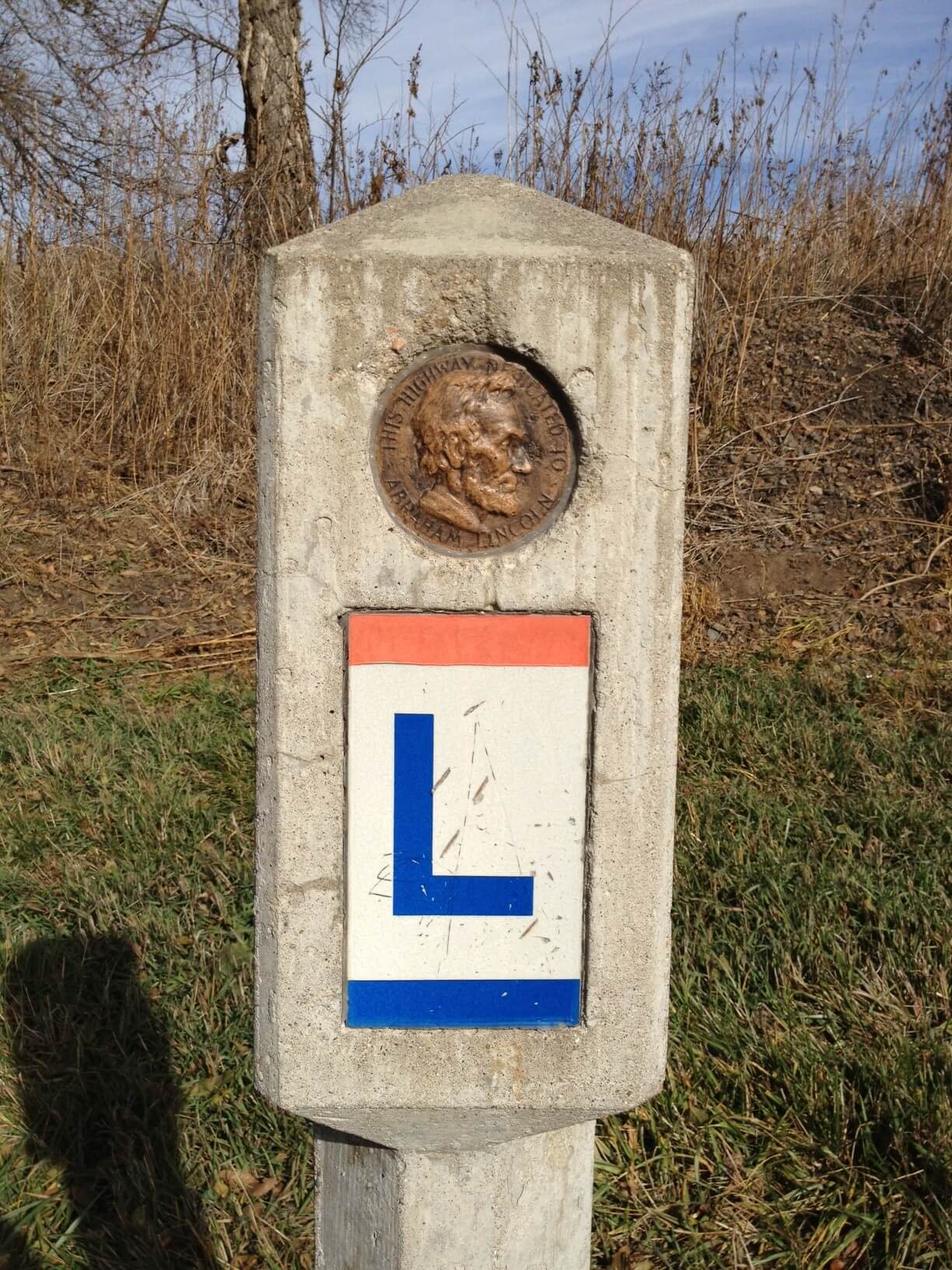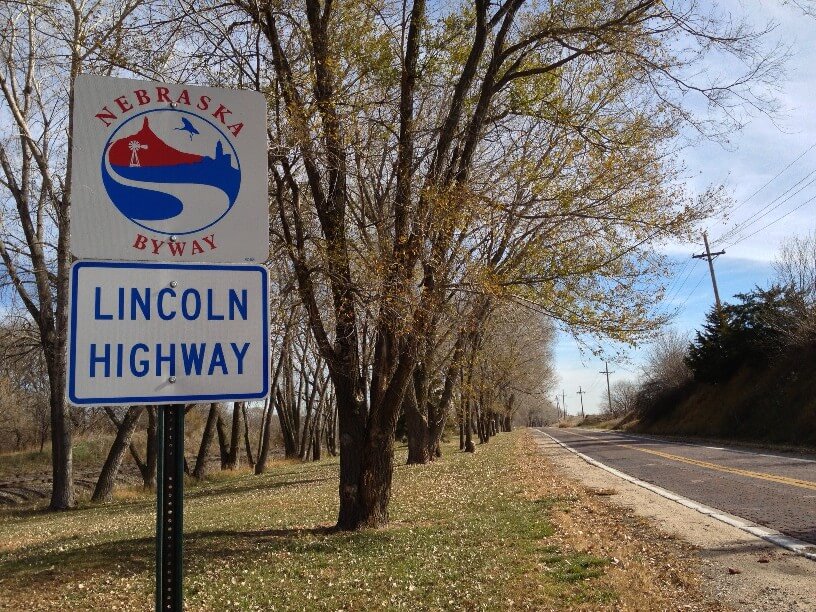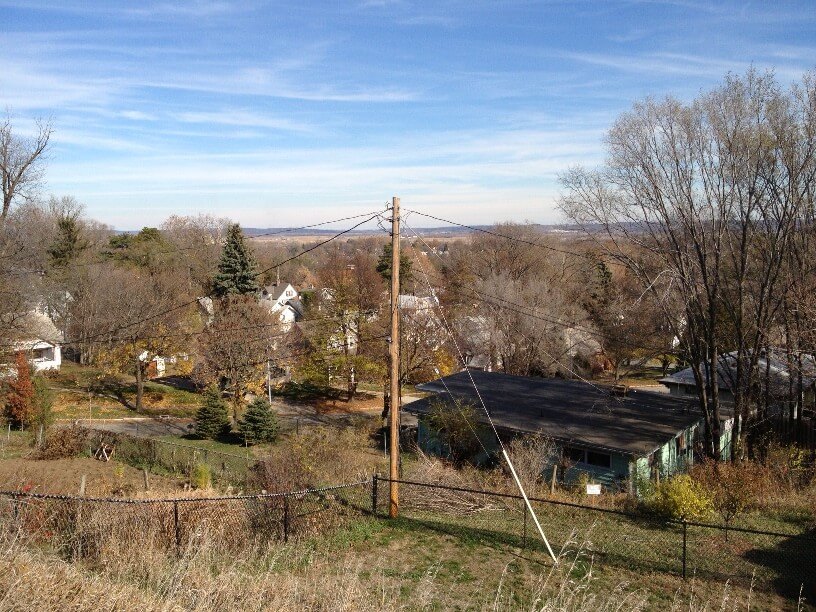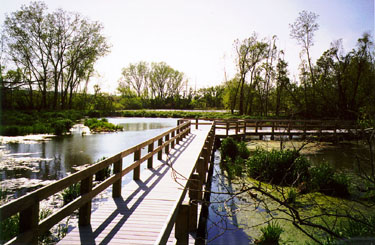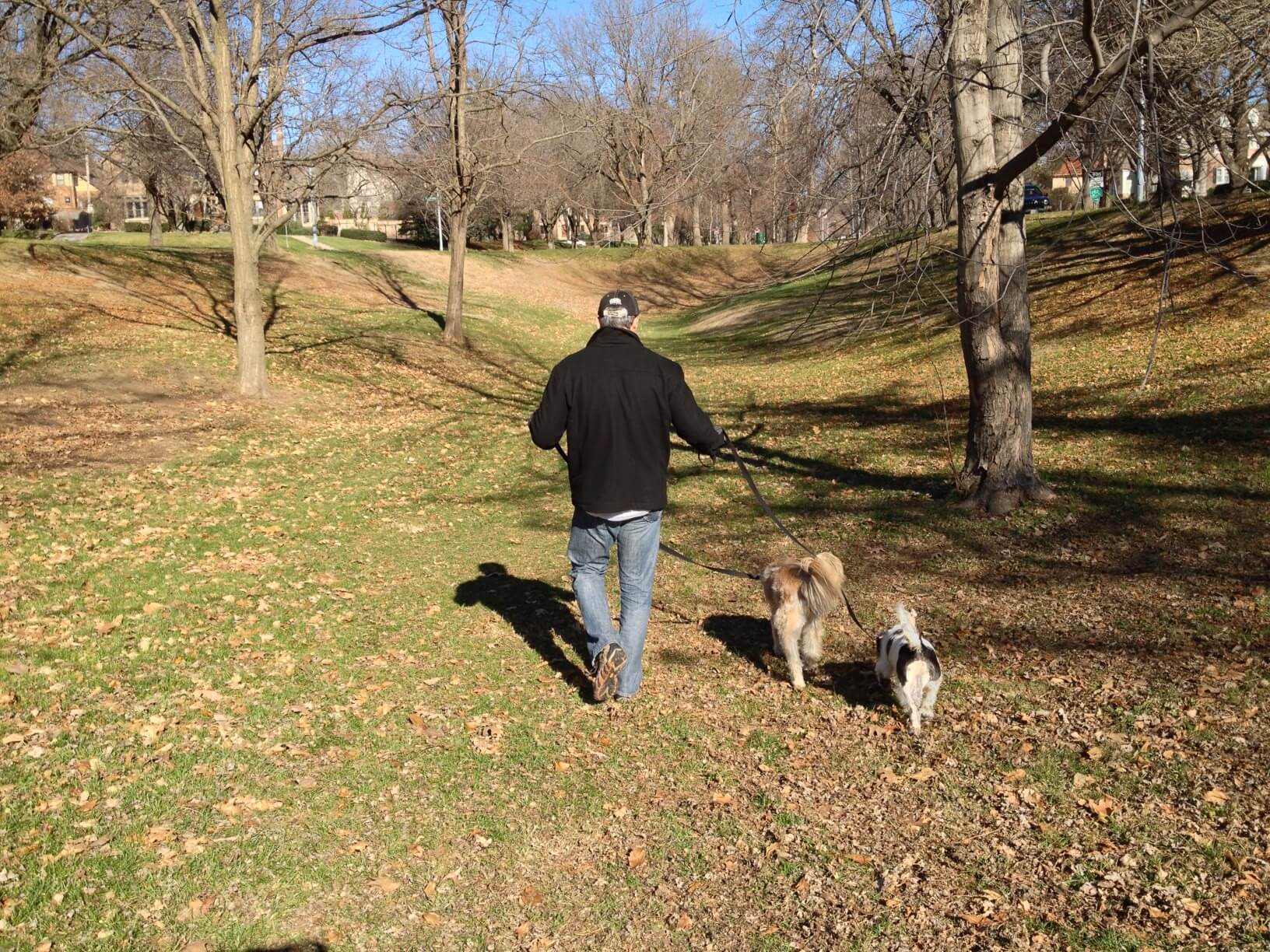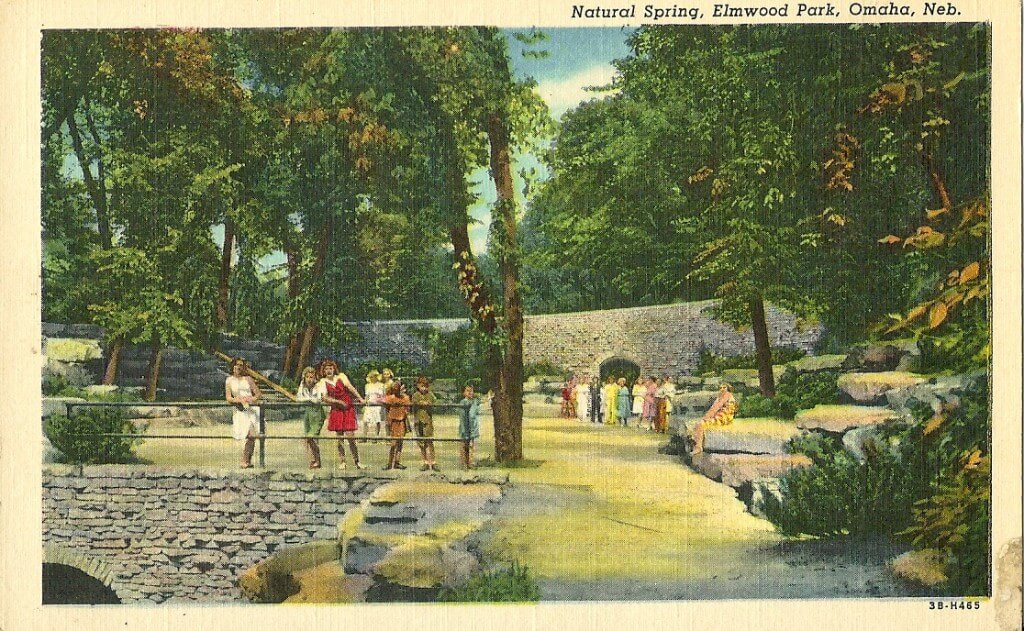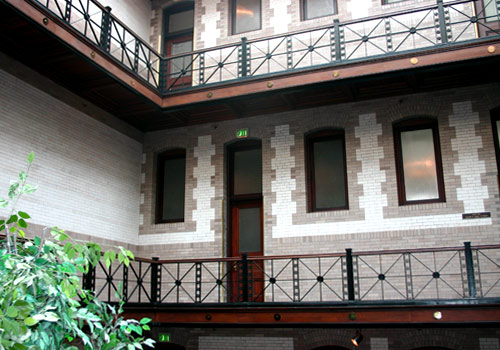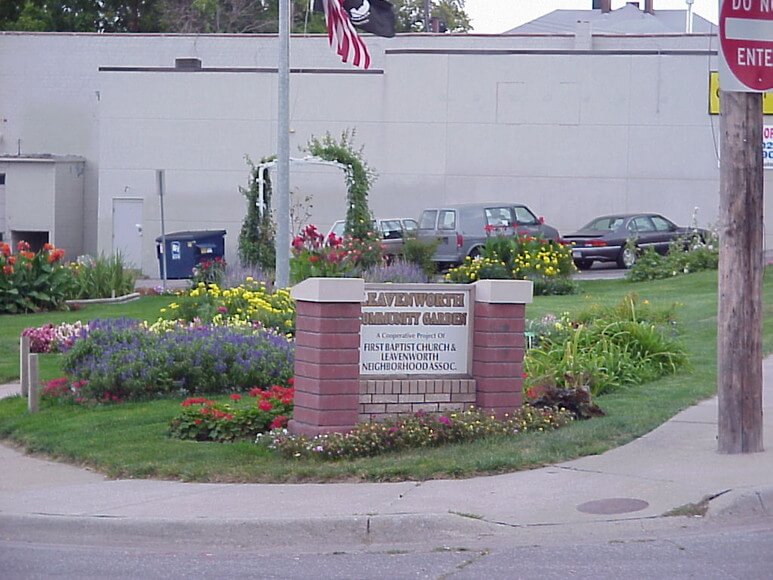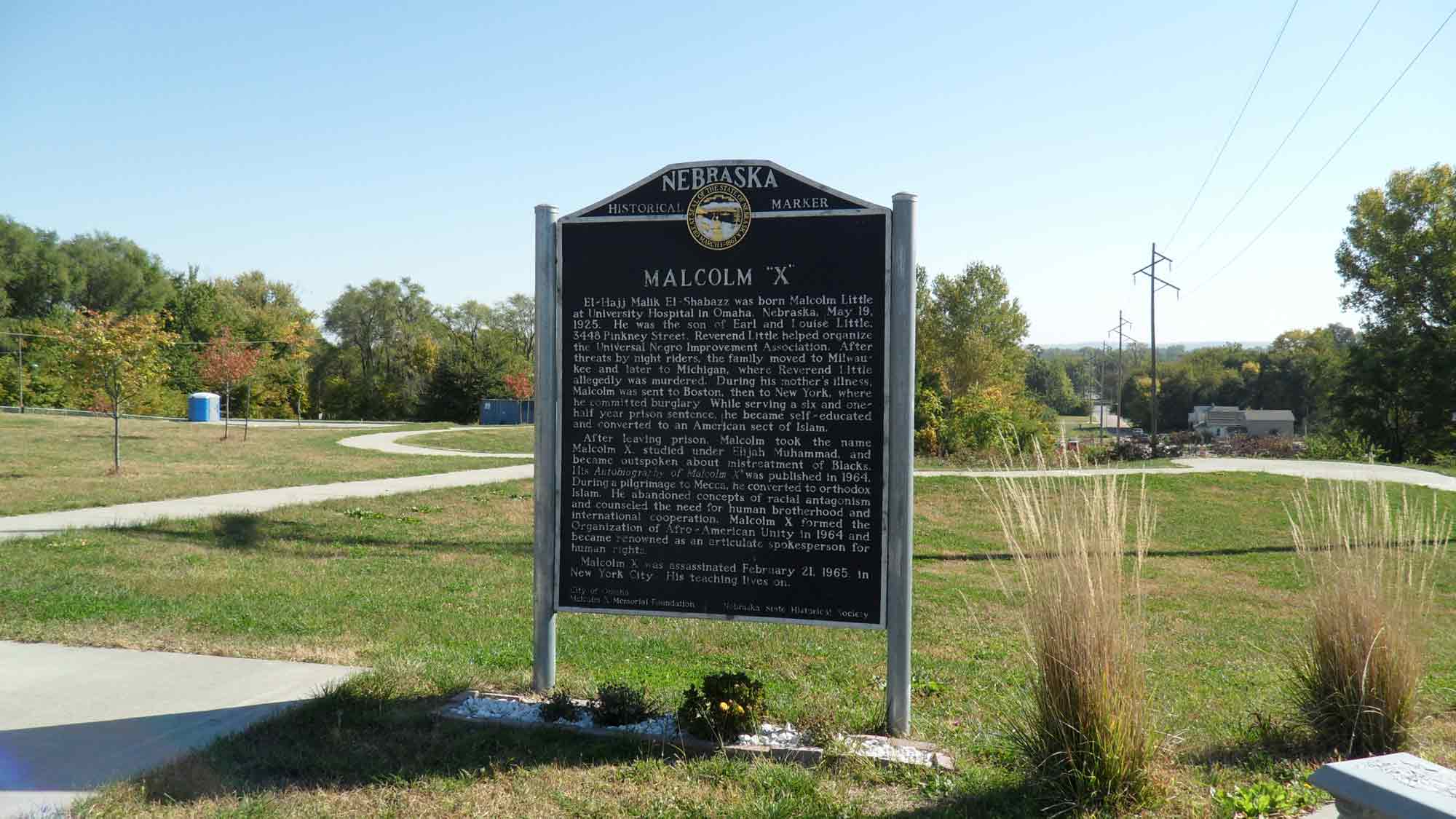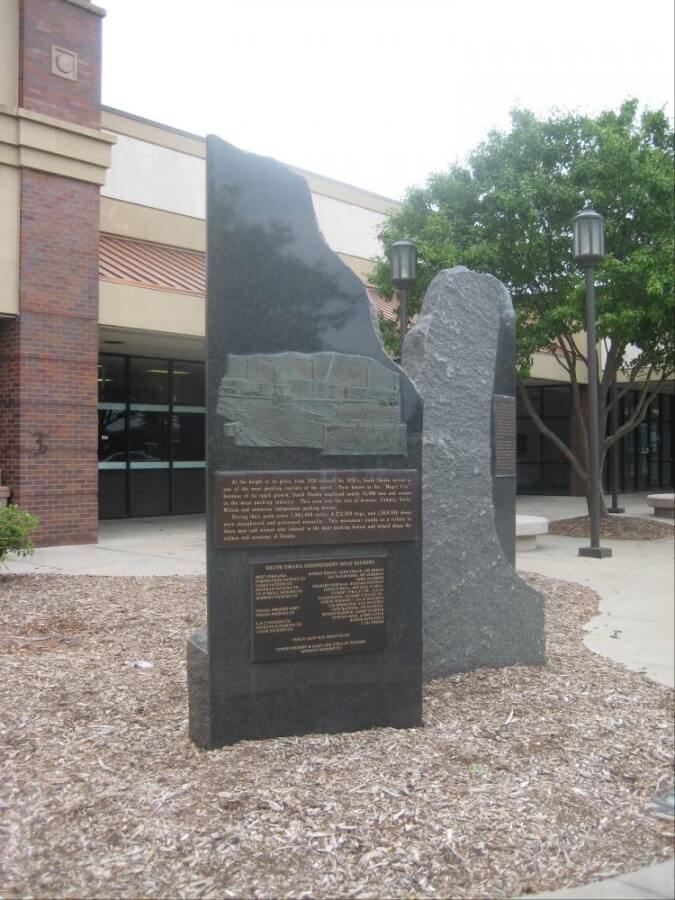Hidden Gems
public spaces off the beaten path
Do you know where to find this marker and others like it?
Omaha is full of great public spaces, some of which immediately spring to mind. But it’s also home to multitudes of hidden gems, public spaces that may be out of your immediate view or off the beaten path, waiting to be discovered.
ObD’s Place Game facilitators have devised a list of 9 hidden gems and sought the public’s help in determining the 10th (see South O markers below).
Some of them are hard to find without a map or address. All of them, though, offer more than the destination. Whether you seek recreation, history, adventure or entertainment, your journey to find them will lead you to a greater awareness of just how unique our community is and how important it is that we preserve and revitalize our public spaces for today’s residents and future generations.
Lincoln Highway
Address: Old Lincoln Highway & N. 180th St. – 203rd St.
The Lincoln Highway, America’s first transcontinental highway, will celebrate its 100th anniversary in 2013. Its first officially recorded length – from New York City to San Francisco – was 3,389 miles. A stretch paved with brick near Elkhorn has been preserved as a nod to the roadway’s historic past.
For more information, visit:
www.lincolnhighwayassoc.org
Belvedere Point Lookout
Address: 3275 Belvedere Boulevard
The Belvedere Point Lookout is close to the highest point in Florence. The site provides visitors with sweeping views of the river valley and the bluffs. It’s definitely worth the trip up from 30th Avenue – try it on foot for a cardiovascular workout!
For more information, visit:
www.historicflorence.org/historicmarkers.htm
Heron Haven
Address: 11809 Old Maple Road
Heron Haven is a spring-fed wetland sanctuary featuring one of the last oxbow wetlands of the Big Papillion Creek. Biology and ecology students use the wetland to conduct ecological studies and surveys of native species of plants and aquatic animals. Its education center offers lectures and short courses on conservation, birding, photography and natural history. The trails are open from dawn to dusk.
For more information, visit:
www.heronhaven.org
The Sunks
Address: Happy Hollow Boulevard from Izard Street to Underwood Avenue
The original Dundee sunken gardens, which many call “The Sunks,” were formal with a small lake on the north end. The flower beds were diligently tended by WPA workers. Eventually, the gardens gave way to the wishes of the surrounding neighborhood for a more open space to run and play. The northern end is a true hidden gem – when you’re in it, the surrounding streets and neighborhoods almost disappear from view.
For more information about the Dundee neighborhood, visit:
www.dundee-memorialpark.org/
Elmwood Park Grotto
Address: 58th and Happy Hollow Boulevard
In its early days, Elmwood Park was known for its natural mineral spring that bubbled water out of a hillside. The water was said to be cooler, tastier and more pure than the city’s water supply, and some thought it contained the power to heal. People flocked there to collect it in giant jugs. This practice slowed in 1947 when pollution became an issue and the water was no longer safe to drink. In 2000, the Peter Kiewit Foundation funded the refurbishing of the grotto. The renovation included bringing back a nature trail through the ravine, new concrete work, lighting and the removal of vegetation to make it more visible from the street. If you’re looking for a quiet place to read, think or enjoy the wonder of nature, stop by for a visit.
For more information, visit:
http://www.cityofomaha.org/parks/rentals/weddings/elmwood-park-grotto
Burlington Building
Address: 1004 Farnam St.
The Burlington Building was built as a three-story structure in 1879 for $40,000. The first floor was leased by a wholesale grocer and a wholesale notion dealer. The upper floors served as headquarters for the Burlington and Missouri River Railroad Company. In 1886, an adjacent lot on the west side of the building was purchased. The headquarters was expanded, and a fourth floor was added. In 1899, Thomas R. Kimball, the chief architect of the Trans-Mississipi Exhibition, was commissioned to remodel the building to resemble the notable Chicago Burlington and Quincy Railroad Company Building. Inside, Kimball directed the construction of a 41 by 43 foot atrium from the first floor to the roof with a pyramidal skylight covering the central court. Many of the building’s elements are the same today as they were more than 100 years ago, including the stairway and balconies. The next time you’re downtown, step inside and look up and around.
For more information, visit:
http://www.burlingtonplace.com
Leavenworth Community Garden
Address: Triangle intersection of 31st Street, Leavenworth and St. Mary’s Avenue
In 1995, this area was an eyesore – overgrown with weeds and strewn with litter. In 1996, the Leavenworth Neighborhood Association (LNA) planted the plot with wildflowers. At that time, the property was owned by an area bank that allowed the LNA to establish a more formal flower garden. The property was later donated to First Baptist Church, and the LNA continued its efforts to improve the garden. A water hydrant was installed on site via grant funding. LNA members built the rose trellis and keep the grassy areas mowed. Volunteers from the LNA and children from the Completely Kids Program at Jackson Elementary School help with spring planting and maintenance. For many years, Fred Nielson, a retiree who lived in the neighborhood, spent many hours weeding, watering and working in the garden. He continues to stop by when he can.
For more information, visit:
http://www.lnaomaha.org
Malcolm X Birth Site
Address: 3448 Evans St.
If you paid attention in history class, you know Malcolm X was born as Malcolm Little in Omaha. But have you ever visited his birth site? It’s now home to the Malcolm X Memorial Foundation, a nonprofit organization established to educate through the teachings of Malcolm X’s legacy on a local, national and international scale. Located across the street from Adams Park, the 11-acre site is currently under development and provides visitors with scenic views of the surrounding area.
For more information, visit:
malcolmxfoundation.org
Omaha’s Boulevard System
Address: Located throughout the city
Omaha’s historic park and boulevard system was designed by eminent landscape architect Horace William Shaler Cleveland, who worked on Omaha projects from 1889 to 1894. In his first report to the Board of Park Commissioners, Cleveland urged the integration of open spaces through the construction of “broad, ornamental avenues, known as boulevards or parkways” designed “with a tasteful arrangement of trees and shrubbery at (their) sides and in the center.” The system recently was nominated for listing on the National Register of Historic Places. Many of the boulevards wind their way through neighborhoods that are off the beaten path. Take a stroll down one that catches your fancy and explore a side of Omaha you’ve never seen before.
For more information, contact the Omaha Department of Parks, Recreation and Public Property:
http://cityofomaha.org/parks
South O Markers
Address: MCC at 27th and Q, along Edward Babe Gomez Boulevard between MCC and the Livestock Exchange Building, 33rd and L streets
The South Omaha People marker and photos at the South Omaha campus of Metropolitan Community College honor the history of those who began journeying to “The Magic City” in 1883. The stockyards and meat packing centers were a major part of the community until they closed in 1999, leaving only the 1926 Livestock Exchange Building behind. Multiple markers lining both sides of Edward Babe Gomez Boulevard describe the historic site. Nearby at 33rd and L streets, a monument created by Omaha artist John Lajba commemorates the meat packing industry in Omaha. It consists of two eight-foot granite slabs that feature bronze reliefs.
For more information, visit:
http://www.southomaha.org/aboutso/past.aspx
